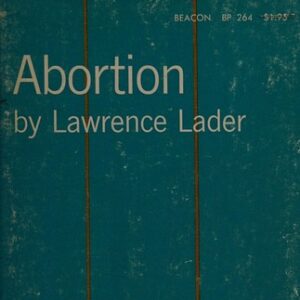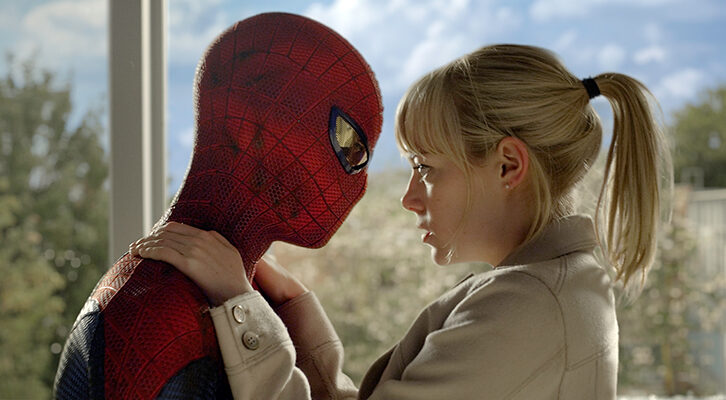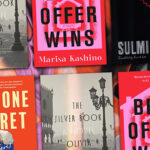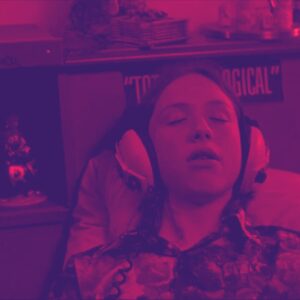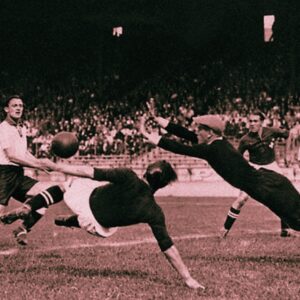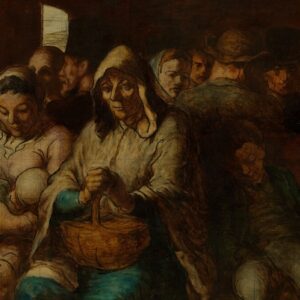
Making the Jump From Big House to Small Press
Susan Shapiro on the Satisfactions of Going Indie
Front Porch Commons is a brand-new site launching today, from the good people at the Community of Literary Magazines and Presses (CLMP). To which we say congratulations and happy birthday. The following is a note from the site’s editor, Emma Komlos-Hrobsky.
Front Porch Commons is a virtual space for conversation within and about the independent literary publishing community. Indie publishing has long been a house of many rooms; I hope Front Porch Commons can be the place where our diverse community comes together to talk. Through weekly blog posts and short essays, we’re creating an ongoing discussion of the ideas and issues that matter most to our industry.
Who’s writing these posts? You! All who are a part of our community–from publishers, booksellers, agents, and librarians, to educators, historians, readers, and writers–are invited contribute. In the true spirit of a commons, we’ll be publishing all submissions we receive (so long as they are previously unpublished, on-topic, and not attack pieces).
We’re happy to feature below one of Front Porch Commons’ first features, an interview with the writer Susan Shapiro.
In her novel What’s Never Said, upcoming from the independent New York-based press Heliotrope, veteran author and teacher Susan Shapiro shares a story of obsessive love between a student and her professor. The book zips back and forth from the 1980s to 2010, moving between his and her (often clashing) perspectives. Shapiro herself is someone who’s seen the writing world from many angles; we were thrilled to hear her perspectives on working with both large publishers and a local, smaller house, and on self-reinvention.
Sarah Herrington: You’re a New York Times bestselling author with major publishers for the last 12 years. So why give your new novel What’s Never Said to the Greenwich Village-based indie press Heliotrope?
Susan Shapiro: I was overjoyed to publish six books with top houses: Random House, St. Martin’s and Penguin. But I found they care a lot about sales and unfortunately my last novel sold about five copies. So that doesn’t make my next work of fiction very desirable.
A few big editors told me they admired What’s Never Said but after having it for months, they seemed ambivalent or suggested major changes such as getting rid of the poets, shrinks and Manhattan, which apparently doesn’t “play in Peoria.” But that was 90 percent of the book. Editors at a Jewish publisher liked the manuscript—it’s my most Jewish book, with an Israeli character. Yet the heroine doesn’t end up married to a Jew—apparently a big shanda. (“Shame” in Yiddish.) So I had to rethink whether I wanted the book to say something more important about my heritage. But truthfully, my religion is confessional poetry.
Herrington: I love that.
Shapiro: Another editor my age liked the older Lila better and thought I should revise the whole book that way. But I already did three memoirs in my forties with a more seasoned voice (Five Men Who Broke My Heart, Lighting Up, and Only As Good as Your Word). So I kind of loved being 20 again through my character.
An editor I admire who’d read my last coauthored memoir, The Bosnia List, suggested I switch back and forth between 1980 and 2010 every single chapter, the way I did in Bosnia List. But that would have required a total revision. And nobody was saying, “We’ll pay you now and help you revise it.” They were sort of saying, “Spend another year ruining something that already works for the slight chance we might then decide to say yes.”
Meanwhile my long-time writing group—who I completely trust—was telling me it was my best book. I was depressed, trying to figure out what to do at the end of March when I learned that Naomi Rosenblatt at Heliotrope had just started taking fiction. I’d met her two years ago when she published my student Royal Young’s great memoir Fame Shark and she also did my colleague Kate Walter’s funny new memoir Looking for a Kiss. I really liked Naomi, thought she was a very cool Greenwich Village hippie chick, like me, around the same age.
When I mentioned my novel, she said she’d read it right away. Within a week she told me she loved it and wanted it exactly the way it was. She’d had a flirtation with a professor in college, too. She totally got what I was trying to do and had very few changes. I was ecstatic.
The downside: she could hardly offer any money upfront. I spoke to my shrink about how demoralizing it was that none of the other editors would match the advances I’d had in the past, debating whether I should go with the great Heliotrope editor who got the book the best, but for little remuneration upfront. He asked me, “What would make you happy about this?” My last two books were just paperbacks. Five years ago I was jealous that my cousin Molly Jong-Fast’s novel had a gorgeous purple cover. So I told him, “If it came out in hardcover, really fast, in August—when I don’t have to teach—with a purple cover.” I told Naomi and she said, “Done.”
Herrington: With the purple cover and everything?
Shapiro: Yes! That’s what’s so fantastic about indie publishing. You have more of a say and don’t have to follow the really long slow schedule and wait 18 months for your book to see print. Also I’m not known to play well with others. In high school I was voted “Least likely to join a cult, most likely to start one.” When I started teaching at the New School, I told them “I’ll give my students my heart and soul. But don’t make me do meetings.” In 23 years they never have.
With Heliotrope, there’s no committee to placate, as there is with major publishers. It’s mostly just Naomi. She gets to say yes or no. And the royalties are much better for writers. I get 50 percent. Some of her authors have actually made more money that way then by getting big advances upfront.
Herrington: I love how Heliotrope is a Greenwich Village-based press and most of the story is set in the Village. How did this story start for you?
Shapiro: In my first memoir, Five Men Who Broke My Heart, which came out 2003, I spilled all the secrets of my former flames. But there was one story I could never tell—until now. I had to fictionalize it. A mentor once told me I wrote best about sex and people I loved. I kind of always had this story of falling for my professor—which I did—in the back of my mind. Then one day five years ago I saw him at a literary party. And he didn’t remember me. I flipped out. On the way home, I tearfully relayed what happened to my husband Charlie, who’d been at the event with me. When I told him what happened, Charlie laughed and said the professor knew exactly who I was. The guy had been staring at him—and us together—the whole night.
I wondered if he did know who I was. If so, I was thrilled. Because if he was still pissed off at me—30 years later—that meant he did really care about me, too. So that was the initial spark. I came home and wrote about what happened and how mortified I felt and showed it to my writing group. To quote one of the members, “You should have gotten old and bitter a long time ago, because this rocks.”
Herrington: So why write it from both Daniel and Lila’s points of view?
Shapiro: In my 33-year career, I’ve had to reinvent myself every five years to keep making a living, reinvigorate and shake things up. After my last novel tanked, instead of giving up on books like a normal person would have, I wound up publishing two coauthored nonfiction projects. Unhooked was a substance abuse book I wrote with my brilliant addiction specialist Fred Woolverton. The Bosnia List was a memoir I did with my Bosnian physical therapist, Kenan, who survived the Yugoslavian war.
I love first person writing, that’s always been my favorite. So I coauthored both books in the first person in their voices. That meant I spent several years and 600 pages in a man’s head. When it came to writing What’s Never Said I tried the male’s voice and liked it. I’ve always been enthralled by Philip Roth and Saul Bellow, so I had that kind of neurotic smart Jewish male hero in my head. I’d also never published a book in third person, so I tried. They say, “You can do anything as long as it works,” and it seemed to.
Herrington: After so many acclaimed memoirs, why a novel?
Shapiro: I like the idea of a memoirist writing fiction about poetry. I was a failed poet—after my MFA I tried writing and publishing poems seriously for a decade. But I had a mentor, the late Harvey Shapiro (no relation) who was my editor at The New York Times Magazine. When I asked him to blurb my small press poetry book, he did, but he was blunt about what he really thought. He told me, “You have too many words and not enough music.”
I was heartbroken until I started making way more money writing about the same obsessions (bad relationships, addictions) for magazines and newspapers. Then I lengthened my work on the same topic for memoirs. Harvey thought I had more poetry in my prose than my poems. I published three memoirs by a relatively young age (in my forties.) But a short-term relationship that didn’t work out in the past wasn’t really worthy of another memoir. I couldn’t have told this story in nonfiction. But it felt right to use real life as a jumping off point, then fictionalize and dramatize more. My astute Knopf editor friend Deb Garrison once told me, “A novel that’s merely autobiographical is a great disappointment. But a memoir that reads like a novel is a great surprise.”
Though I never really understood people who proclaim, “I am a poet,” “I am a novelist,” or “I am a journalist,” when most authors have to switch genres several times over a long career. John Updike wrote short stories, novels, art criticism, bad poetry. Hell, the guy even drew his own pictures on his New Yorker pieces. I’m doing a panel about the benefits of switching genres. I just call myself a writer. And I teach by night, which started out as a way to pay bills and ended up a second calling.
Herrington: I agree with the “writer” label, across genres. Why did you set the book in the MFA program and the poetry world?
Shapiro: I have little imagination. That was where it happened. Plus I like the irony that two poets dedicated to the written word couldn’t communicate or tell each other anything important. At one point the hero says, “Poetry is about what’s in between the lines, what’s never said.” It was fun to wrap the book around what’s never said between them—and also there’s a big sexual secret that neither Daniel nor Lila ever tell their spouses.
Herrington: You and your character Lila share hunger for a big career and big love. Can an ambitious person have it all?
Shapiro: Freud says there’s two life forces: work and love. I’ve been blessed to have found joy in both. Though I needed a lot of therapy to get there and it took a long time. I married late and my first real book didn’t come out until I was 43. I think Rilke said a creative soul shouldn’t marry until 35 because before then you don’t really know who you are.
Herrington: In real life is it ever a good idea to revisit an old flame?
Shapiro: It’s funny, in Five Men Who Broke My Heart, which I started when I was 41, I went back to re-meet my top five heartbreaks of all time to find out what really happened. When I asked my high school boyfriend if we could get together to talk about the past, he said “I’d rather take out my own appendix with a bottle of Jack and a dull spoon.” But that made a great line, and we eventually did meet and I got a Modern Love piece out of it. All the other men were kind and generous and I’d say that experience was mind-blowingly wonderful. So the answer at that point would have been: yes! Call your exes! Mine your past for material. As Joan Didion says, “A writer’s always selling someone out.”
But I see What’s Never Said as a sort of fictional sequel to Five Men that shows the darker side. Maybe what was cute at 40 isn’t as adorable post-50. Or some old lovers aren’t meant to ever become friends. In my writing workshop, when you bring in work, the worst insult is “There’s no blood here.” There’s definitely blood in What’s Never Said.
Herrington: I feel like you’re creative not just in your writing but in how you promote your work. For this project you’re hosting a Speed Shrinking for Love charity event, a Bring an Ex For Just Desserts party. How do you come up with this stuff?
Shapiro: Well, my mom was a party planner so I used to watch her do funny theme parties. And—as I’ve written about—I no longer drink, smoke, toke. I quit bread, sugar, diet soda. (Subject of the last novel, Speed Shrinking.) Addictive personalities like mine don’t stop being compulsive. They just switch compulsions. So publishing books and book events are my new addictions. I have so much fun at book events I sometimes feel like I’m on heroin.
Herrington: As your one-time student, I remember you saying that “writing is a way to turn your worst experience into the most beautiful.” I feel that way myself. Now that you’re a popular writing professor at The New School, is publishing a book about your own confusing days as a student healing?
Shapiro: Definitely. Leaving Michigan and moving to New York at 20 to get my MFA and study with someone like Daniel changed my life. It led to all my dreams coming true. In some ways I’ve emulated him and feel intense gratitude. It seems sad that I can’t ever tell him how much he meant to me. So there really are words that were never said. Maybe in some ways the book is a love letter, written 30 years late.
Susan Shapiro, an award-winning New School writing professor, is the New York Times bestselling author of 10 books including the coauthored Unhooked (Skyhorse Press, 2012) and The Bosnia List (Penguin 2014.) Her new novel, What’s Never Said, which took six years to finish, is just out from Heliotrope. Follow her on Twitter at @Susanshapironet.
Sarah Herrington has written for the New York Times, L.A. Times, San Francisco Chronicle, Tin House, Interview, Poets & Writers and she was named “a poet to watch” by O: The Oprah Magazine. She’s author of the poetry collection Always Moving (Bowery Books, 2001), Om Schooled (Addriva Press, 2012), Essential Yoga (Fair Winds Press, 2013) and coauthor of Wanderlust (Rodale, 2015.)









